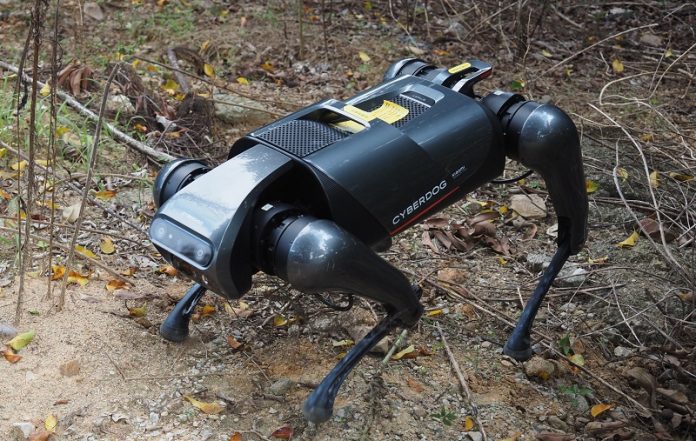
A team of researchers from China and Brazil has developed a groundbreaking method to tackle the spread of the Red Imported Fire Ant (RIFA), one of the world’s most destructive pests.
By training a dog-like robot, known as “CyberDog,” to detect fire ant nests, they hope to automate the process of identifying and controlling these harmful insects.
The study, recently published in the journal Pest Management Science, demonstrates how this innovative technology could significantly improve pest management efforts.
The robot dog, equipped with artificial intelligence (AI), was put to the test in the field, where it outperformed human inspectors by finding three times as many fire ant nests with greater accuracy.
Eduardo Fox, a postdoctoral researcher at the State University of Goiás in Brazil and a lead author of the study, explained the motivation behind this new approach.
“Finding fire ant nests in the wild can be difficult, especially for people who aren’t trained to recognize them. Searching large areas in the heat can also be exhausting,” Fox said. “A robot, on the other hand, can automatically locate the nests, no matter the time of day or weather conditions, and it doesn’t require special training.”
RIFA is a highly invasive species that has caused significant environmental damage and economic loss since it was accidentally introduced to the United States in the 1930s.
These ants have since spread to other parts of the world, including China, Japan, and Europe. They are known for displacing native plants and animals, particularly small birds and reptiles, and for damaging crops and other plants.
Fox emphasized the importance of detecting fire ant nests early. “RIFA can quickly take over an area, pushing out native species and damaging the local ecosystem. They also associate with agricultural pests like mealybugs, which can harm crops.”
Traditional methods of controlling fire ants often involve the use of pesticides, which can be harmful to the environment. To minimize this impact, the researchers aimed to develop a more targeted approach using the CyberDog.
The team used Xiaomi’s CyberDog robot, which they trained using a machine learning model based on over 1,100 images of fire ant nests. This advanced system was able to identify fire ant nests with over 90% accuracy.
During field tests, the robot was programmed to press its front paw on suspected nests. When the ants sense a disturbance, they swarm out aggressively, helping to confirm the presence of an active nest.
Dr. Hualong Qiu, a researcher at the Guangdong Academy of Forestry in China and a co-author of the study, described how the robot was tested against human inspectors. A group of students, trained as quarantine inspectors, was tasked with finding fire ant nests in an open field. Then, the robot was sent to the same area. The results showed that the robot was more effective in locating the nests.
Despite the success, the researchers acknowledged some challenges in scaling up the technology. Zheng Yan, a researcher at Lanzhou University in China and another co-author of the study, pointed out that the robot’s battery life is currently limited to about 30 minutes, and the cost of producing more advanced models remains high.
However, they are optimistic that these issues will be resolved over time, making the technology more accessible.
The study’s findings could play a crucial role in shaping future pest control strategies. In addition to being a powerful tool against fire ants, the robot dog has the potential to raise public awareness about the dangers of invasive species.
As Dr. Yan noted, “Seeing a robot dog tracking fire ant nests is sure to capture people’s attention and make them more aware of the risks posed by these pests.”



